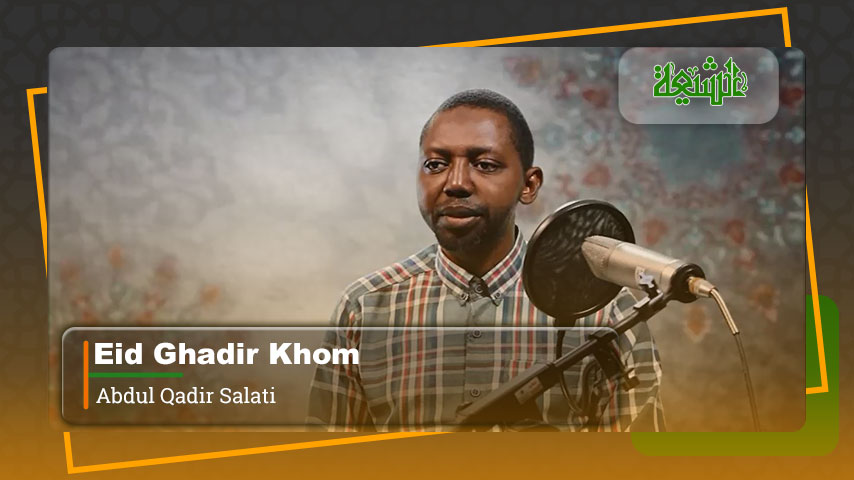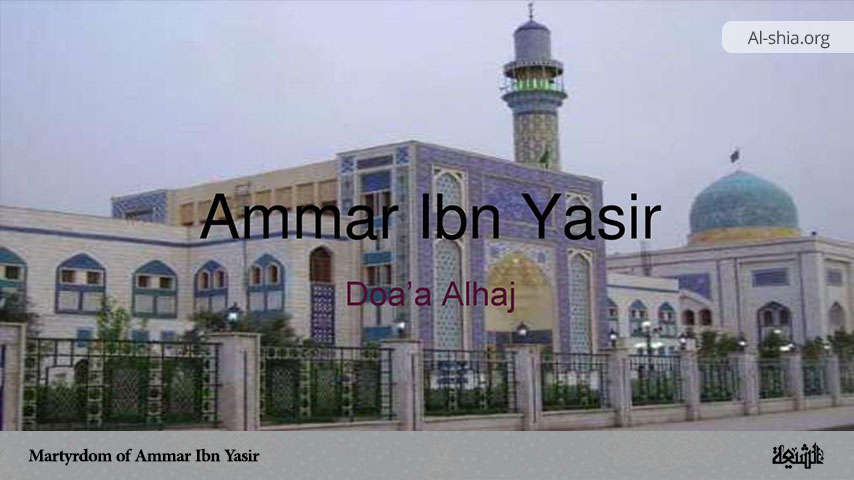Ali ibn Musa al-Rida (Romanized: ʿAlī ibn Mūsā al-Riḍā) was a descendant of the Prophet Muhammad, and the eighth Imam in Twelver Shia Islam, succeeding his father, Musa al-Kazim. Ali al-Riḍa is also known as Abū al-Ḥasan al-Thānī (lit. ’Abu al-Hasan, the second’) to distinguish him from his father, Musa al-Kazim, who is also known as Abu al-Hasan al-Awwal (lit. ’Abu al-Hasan, the first’).
This study aims to examine the historical context, political circumstances, theological and Spiritual implications, and lasting legacy of the martyrdom of Imam al-Rida. By exploring these dimensions, we can better appreciate the enduring significance of the Imam’s life and sacrifice in shaping Islamic spirituality and thought.
Causes of Tension with al-Maʾmun
The relationship between Imam Ali ibn Musa al-Rida and the Abbasid caliph al-Maʾmun was characterized by deep political tension, despite the outward show of cooperation. Al-Maʾmun’s decision to summon the Imam from Medina to Khurasan and appoint him as his heir apparent was not merely an act of respect but a calculated political maneuver.
At the time, al-Maʾmun, facing a weak position in the Islamic state due to his lowly maternal lineage, rivalry with his brother al-Amin, and dependence on his Persian advisor al-Fadl ibn Sahl, sought to strengthen his authority and counter his opponents. To consolidate his influence, he appointed Imam Ali ibn Musa al-Rida, a highly respected figure whose knowledge and spiritual standing were widely recognized and supported by many Muslims, as his successor, thereby reinforcing his own legitimacy in the Islamic world and neutralizing potential opposition[1].
However, the very presence of Ali ibn Musa al-Rida in Khurasan soon became a source of unease for the Abbasid caliph. The Imam’s profound scholarship, eloquence, and spiritual authority drew people from across the empire, strengthening his position in ways that threatened Abbasid dominance. Contemporary reports describe how Ali ibn Musa al-Rida engaged in public debates with scholars of various faiths and consistently outshone them, earning admiration even among non-Muslims[2].
Over time, these gatherings created difficulties for al-Maʾmun. Realizing that such sessions posed a threat to his position, he began to impose restrictions on the Imam. According to a report from ʿAbd al-Salam al-Hirawi, when al-Maʾmun was informed that Imam al-Rida’s theological discussions were drawing people’s admiration and attention, he dispatched Muhammad ibn ʿAmr al-Tusi to disperse the assembly. In response, the Imam invoked a curse upon al-Maʾmun[3].
Furthermore, while al-Maʾmun attempted to legitimize his rule by bestowing the title of heir on Imam Ali ibn Musa al-Rida, the Imam himself openly clarified that his acceptance of the position was under compulsion and without genuine authority[4]. This refusal to endorse Abbasid rule undercut al-Maʾmun’s propaganda, making clear to the people that the Imam distinguished between divinely appointed Imamate and worldly political power.
The growing popularity of al-Rida, coupled with al-Maʾmun’s fear of losing control, deepened the rift. The Imam’s independence of thought, combined with his widespread influence, made him a symbolic rallying point for opposition against Abbasid legitimacy. As many historians have noted, it was precisely this fear of being eclipsed that led al-Maʾmun to orchestrate the Imam’s eventual poisoning in 203/818[5].
Circumstances of the Martyrdom
According to the majority of scholars and historians, the martyrdom of Imam Ali ibn Musa al-Rida occurred in 203/818[6] under suspicious and politically charged circumstances, widely understood within Shiʿi tradition as a deliberate act of poisoning orchestrated by the Abbasid caliph al-Maʾmun.
Following the Imam’s martyrdom, al-Maʾmun attempted to conceal responsibility by arranging for the Imam’s burial beside the grave of Harun al-Rashid in Sanabad. However, this gesture failed to quell suspicions, and among the Shiʿa, the event was permanently etched as a betrayal and martyrdom. The site of the Imam’s grave later developed into the city of Mashhad, one of the most important pilgrimage centers in the Islamic world[7].
Thus, the circumstances of Ali ibn Musa al-Rida’s martyrdom highlight the intertwining of political power and religious authority in the Abbasid era. While al-Maʾmun sought to strengthen his rule through association with the Imam, the outcome only deepened the divide between Abbasid rulers and the Shia community, while elevating the spiritual legacy of Imam al-Rida.
Aftermath of the Martyrdom
The martyrdom of Imam Ali ibn Musa al-Rida in 203/818 had immediate and far-reaching consequences for both the Abbasid caliphate and the Shia community. Al-Maʾmun, who had orchestrated the Imam’s presence in Khurasan as a political strategy, was forced to confront the backlash that followed the Imam’s sudden and suspicious death.
The political fallout was particularly significant in Baghdad, where the Abbasid elites had already opposed al-Maʾmun’s policies. The appointment and subsequent death of Ali ibn Musa al-Rida deepened mistrust of al-Maʾmun, compelling him eventually to abandon Khurasan and return to Baghdad in 204/819 in order to consolidate his authority[8].
For the Shia, the Imam’s martyrdom reinforced a recurring historical pattern: the persecution of the Imams by ruling dynasties. The circumstances of his death strengthened the community’s conviction that true spiritual authority lay with the line of the Ahl al-Bayt, in contrast to the oppressive politics of the caliphate. This event thus not only consolidated Shiʿi identity but also elevated the status of al-Rida as a martyr (shahid), linking his legacy to the wider tradition of sacrifice beginning with Imam Husain at Karbala[9].
The burial site of the Imam soon became a focal point of devotion. Over time, Sanabad came to be known as Mashhad al-Rida (“the place of martyrdom of al-Rida”). By the 10th century, the shrine had developed into a major pilgrimage site, attracting Muslims from across the Islamic world. The devotion attached to the shrine not only reinforced the Imam’s spiritual authority but also turned Mashhad into one of the most significant centers of Shiʿa identity.
Theological and Spiritual Significance
The martyrdom of Imam Ali ibn Musa al-Rida holds profound theological and spiritual meaning within Shiʿi thought. Like his forefathers, the Imam’s martyrdom is seen as part of the divine pattern of persecution endured by the Imams at the hands of unjust rulers. This reinforces the Shiʿi conviction that legitimate authority lies with the divinely appointed Imams rather than with temporal caliphs.
Spiritually, his martyrdom is interpreted as an extension of the ethos of sacrifice embodied at Karbala by Imam Husain (PBUH). By submitting to God’s decree and enduring oppression with patience, al-Rida exemplified the Qur’anic ideal of steadfastness in the face of injustice (Qur’an 2:155–157). This theme of patient endurance became central to Shiʿi devotional memory, where martyrdom is viewed not merely as a tragic death but as the ultimate testimony (shahada) to truth and divine loyalty[10].
Moreover, the continued veneration of Ali ibn Musa al-Rida at his shrine in Mashhad reflects the theological notion of the Imam as a spiritual intercessor whose presence remains active even after death. Pilgrimage (ziyarah) to his resting place is understood as both an act of devotion and a means of seeking nearness to God through the Imam’s sanctity.
Thus, the martyrdom of Ali ibn Musa al-Rida is not only a historical event but also a theological symbol, embodying the Shiʿi vision of divine authority, redemptive suffering, and ongoing spiritual guidance.
Legacy of Imam Ali ibn Musa al-Rida
The legacy of Imam Ali ibn Musa al-Rida extends far beyond his martyrdom, shaping Islamic thought, Shiʿi identity, and devotional practice across centuries. Intellectually, he is remembered for his profound contributions to theology and interfaith dialogue. His recorded debates with scholars of different religions in the court of al-Maʾmun demonstrate not only his mastery of Islamic sciences but also his ability to defend the universality of Islam in rational and inclusive terms[11].
His narrations, particularly in hadith collections such as ʿUyun Akhbar al-Rida and the devotional text known as al-Sahifa al-Ridawiyya, continue to inspire Shiʿi spirituality. They emphasize core themes of tawhid, justice, and ethical conduct, cementing his role as a transmitter of prophetic wisdom[12].
Culturally, the shrine of Imam Ali ibn Musa al-Rida in Mashhad stands as one of the most important centers of pilgrimage in the Muslim world. Over time, it evolved into a hub of scholarship, charity, and religious identity, symbolizing the enduring bond between the Shiʿa and their Imams. The shrine’s influence continues today, attracting millions of pilgrims annually and functioning as a spiritual heart for Shiʿi devotion.
Thus, Imam Ali ibn Musa al-Rida’s legacy endures in multiple dimensions: as a theologian and debater, as a spiritual exemplar, and as a martyr whose shrine has become a beacon of faith and unity for generations of Muslims.
Conclusion
The martyrdom of Imam Ali ibn Musa al-Rida symbolizes steadfastness, divine loyalty, and the enduring struggle for justice. It reinforces the Shiʿi understanding of legitimate spiritual authority and highlights the significance of patience and sacrifice in the face of oppression. His legacy continues through his teachings, narrations, and the veneration of his shrine in Mashhad, which serve as enduring sources of spiritual guidance, ethical inspiration, and communal identity for Muslims worldwide.
Notes:
[1] . Baqir Sharif al-Qurashi (1412 A.H). The life of Imam ‘Ali bin Musa’ al-Ridha, p. 597.
[2] . Ṭabrisī, Aḥmad ibn ʿAlī (1403 AH). Al-Iḥtijāj, vol. 2, p. 396.
[3] . Ṣadūq, Muḥammad ibn ʿAlī (1378 AH). ʿUyūn Akhbār al-Riḍā, vol. 2, p. 172.
[4] . Al-Mufid, Muhammad ibn Muhammad (1981). Al-Irshad: The Book of Guidance, pp. 441.
[5] . Momen, Moojan (1985). An Introduction to Shiʿi Islam, p. 42.
[6] . ʿĀmilī, al-Sayyid Jaʿfar Murtaḍā (1430 AH). Al-Ḥayāt al-sīyāsīyya li-l-Imām al-Riḍā, p. 169.
[7] . Al-Mufid, Muhammad ibn Muhammad (1981). Al-Irshad: The Book of Guidance, p. 449.
[8] . Hugh Kennedy (2016). The Early Abbasid Caliphate: A Political History, pp. 161-162.
[9] . Momen, Moojan (1985). An Introduction to Shiʿi Islam, p. 42.
[10] . Ayoub, Mahmoud (1978). Redemptive Suffering in Islam, pp. 120–123.
[11] . Ṣadūq, Muḥammad ibn ʿAlī (1378 AH). ʿUyūn akhbār al-Riḍā, vol. 1, p. 152.
[12] . Faḍl Allāh, Muḥammad Jawād (1377 Sh). Taḥlīlī az zindigānī-yi Imām Riḍā, p. 196.
References:
Al-Mufid, Muhammad ibn Muhammad (1981). Al-Irshad: The Book of Guidance. Translator: I.K.A. Howard. London: Muhammadi Trust.
ʿĀmilī, al-Sayyid Jaʿfar Murtaḍā (1430 AH). Al-Ḥayāt al-sīyāsīyya li-l-Imām al-Riḍā. Beirut: al-Markaz al-Islāmī li-l-Dirāsāt.
Ayoub, Mahmoud (1978). Redemptive Suffering in Islam: A Study of the Devotional Aspects of Ashura in Twelver Shiʿism. The Hague: Mouton.
Baqir Sharif al-Qurashi (1412 A.H). The life of Imam ‘Ali bin Musa’ al-Ridha. Translator: Jasim al-Rasheed. Qom: Ansariyan Publications.
Faḍl Allāh, Muḥammad Jawād (1377 Sh). Taḥlīlī az zindigānī-yi Imām Riḍā. Translator: Muḥammad Ṣādiq ʿĀrif. Mashhad: Āstān-i Quds-i Raḍawī.
Hugh Kennedy (2016). The Early Abbasid Caliphate: A Political History. New York: Routledge.
Momen, Moojan (1985). An introduction to Shiʻi Islam: The history and doctrines of Twelver Shiʻism. New Haven and London: Yale University Press.
Ṣadūq, Muḥammad ibn ʿAlī (1378 AH). ʿUyūn akhbār al-Riḍā. Tehran: Nashr-i Jahān.
Ṭabrisī, Aḥmad ibn ʿAlī (1403 AH). Al-Iḥtijāj. Editor: al-Sayyid Muḥammad Baqir al-Mūsawī. Mashhad: Saʿīd Publications.


















